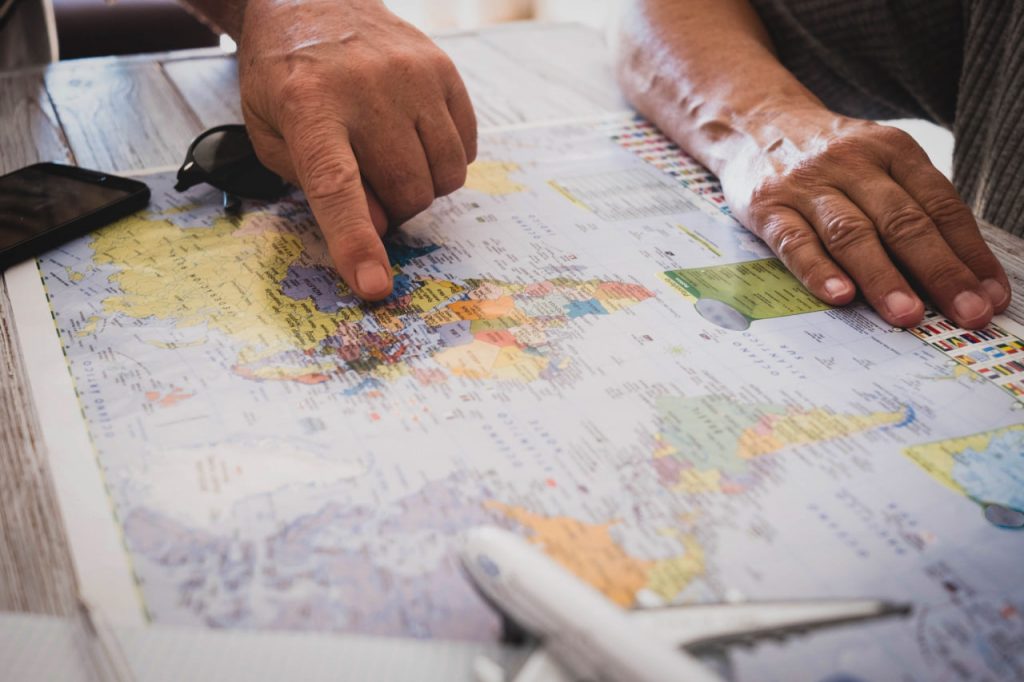When creating your own travel maps, accuracy is only part of the picture. A truly expressive map is not a perfect replica of terrain — it’s a reflection of your unique path, filled with memories, impressions, and meanings. To achieve that, artists rely on three essential elements: symbols, stories, and scale.
Symbols: Speaking Through Simplicity
Symbols are the visual language of map art. Instead of drawing every detail, we simplify — a swirl for the wind, a tiny house for a homestay, a spiral for a sacred site. These symbols help you convey more than just geography; they carry atmosphere and emotion.
Developing your own symbolic vocabulary is part of the creative process. You might use a teacup to mark a favorite café, a wave shape for a stormy sea crossing, or a lantern to represent moments of insight. Over time, your sketchbook becomes full of signs that only you truly understand — like a private travel dialect in ink.
Stories: Memory as Map
What makes a map personal is the story behind it. What happened at that quiet bend in the road? Who did you meet in the mountain village? Where did you take a wrong turn and end up somewhere magical?
Map journaling allows you to embed these stories right into the landscape. Use small annotations, speech bubbles, or even little diary entries along the edges of your drawings. These elements turn your map into a living memory, one that holds not just “where,” but also “why.”
Scale: Bending Reality to Serve the Heart
In classic cartography, scale must be precise. But in map art, scale is emotional. You can enlarge the places that meant the most, and shrink those that felt fleeting. A small street corner where you shared laughter might deserve a full page, while a long bus ride through a dull highway might become just a thin line.
This playful manipulation of space gives your map heart and rhythm. It makes your journey feel as vibrant on paper as it did in life — with room for both detours and discoveries.
At Map Art Journey, we encourage you to trust your inner compass. The maps you draw don’t need to match any printed guide. They are reflections of how the world unfolded through your eyes — layered, symbolic, and alive.

